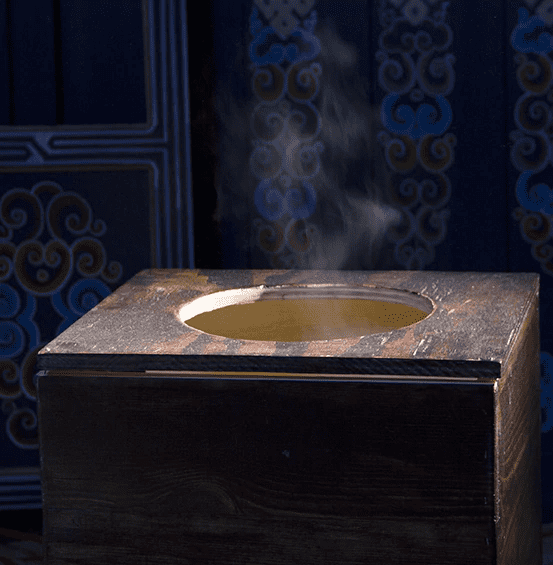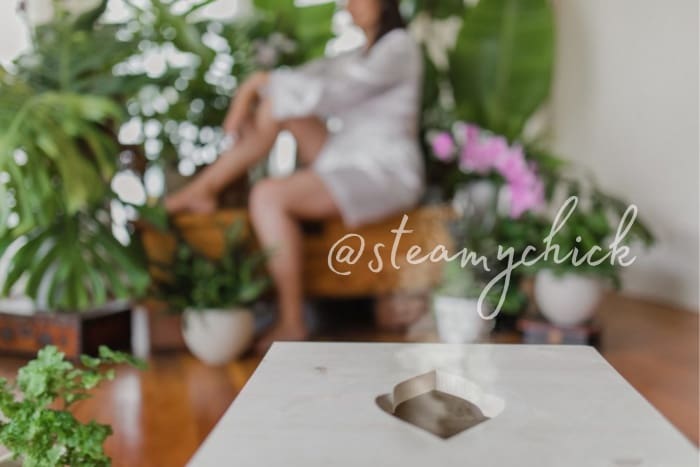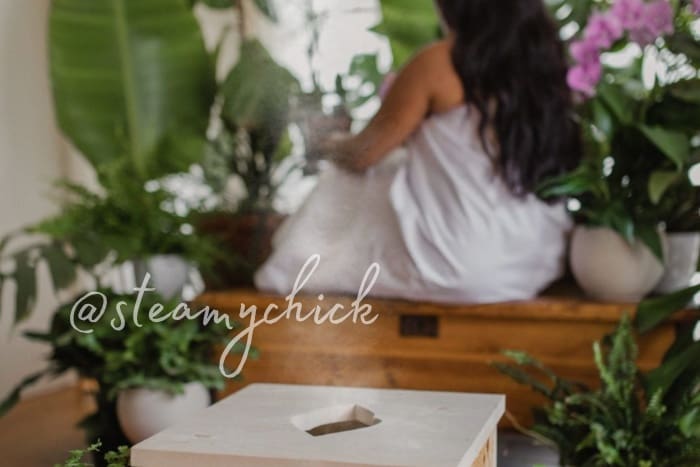Author: Steamy Chick
Published: November 3, 2016
When it comes to natural alternatives to fibroid treatment vaginal steaming is an ancient practice that has been gaining a lot of attention. A gentle therapy that involves sitting over herbal steam and letting it ascend up the vaginal canal, could vaginal steaming actually work?
I set up a little experiment to find out.
I imagine fibroids are about the same consistency as hardened glue (basing this on the Traditional Chinese Medicine concept that fibroids are congealed phlegm) so I took shoe goo and spread it all over the sides of a glass jar and added a big glob at the bottom. I let it dry for 48 hours and then placed the jar on a metal rack with a pot of boiling water underneath. In a matter of two minutes all of the glue had entirely melted and the jar was perfectly clean. Pretty quick results. Actually, way faster than I had anticipated. So we know that steam can melt glue really quick. But how would this work in the uterus?
When doing a vaginal steam, steam rises up the vaginal canal and touches the cervix. Though the cervix has an opening it is closed tight most of the time so the steam cannot directly touch the inside of the uterus (and fibroid) as it had the glue in the jar. So that left me with the question could the steam get through the cervical barrier? I created a second experiment to try to find out.
This time I repeated the experiment as before but added a piece of pleather with a tiny slit (1/8 of an inch) over the metal rack. I placed the jar with dried glue over the slit. Doing the experiment in this way a lot less steam was able to get into the jar. After a couple minutes I saw signs of condensation on the side of the jar and that was the only way I knew that some steam was making its way through the slit. After about five minutes the glue was clearly melting and passing back out through the slit. But very slowly. I continued the experiment for 30 minutes (the average amount of time for a vaginal steam session). At the end of 30 minutes about 1/2 of the glue in the jar had melted and drained out through the slit. Definitely a lot slower but still pretty impressive.
Although this isn’t a perfect experiment to emulate a fibroid in the uterus, it shows the process and the potential of using steam to liquidize fibroids. It appears that they might be able to melt right out.
Midwife Bianca Tema Mercado of La Matriz Birth Services has seen first hand the benefits of vaginal steaming for one of her clients. After three steam sessions within one months time the cleint’s fibroid shrank from five centimeters to two and a half centimeters. Astonishingly quick results.
Colon hydrotherapist Monisha Garner has also seen such success. After nine weeks treating a client with two fibroids the size of an apple, Garner’s client went to the gynecologist for a checkup and was pleasantly surprised to find out that both fibroids were entirely gone.
Antoinette C. of San Diego treated her fibroids by steaming at home. She reports that two of her fibroids actually fell out in the toilet. “Bitches,” she addressed them, “it has been a long journey, lessons have been learned, it’s time for you to go your own way,” she said as she flushed them gone forever.
About the Author
Keli Garza has a Masters degree in International Development graduating cum laude. Garza is the owner of Steamy Chick and the founder of the Peristeam Hydrotherapy Institute.




